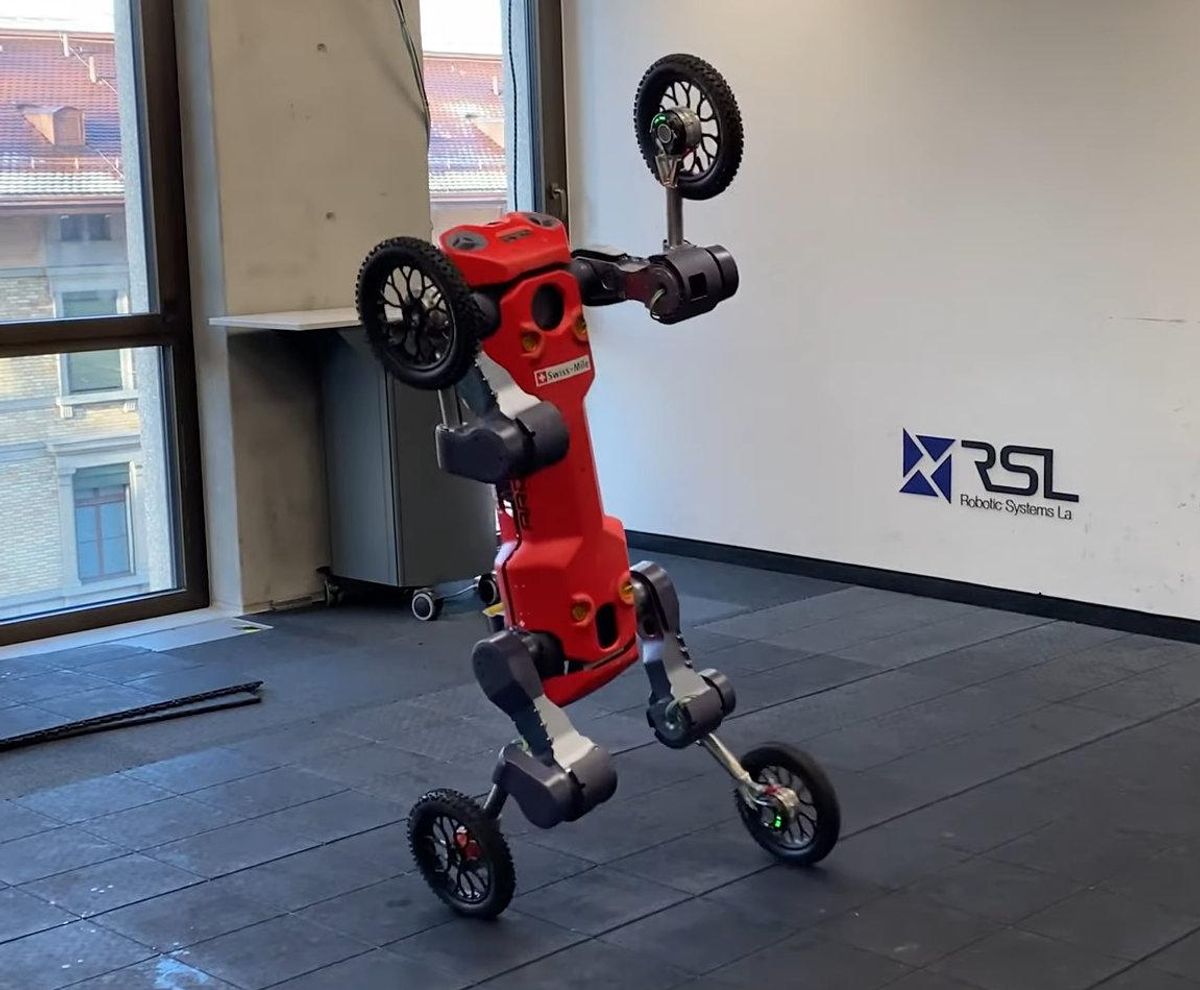Last year, we wrote an article arguing that for legged robots, motorized wheels offer a number of significant advantages over feet. Locked wheels can behave similarly to point feet, and unlocking them gives legged robots the ability to travel both faster and more efficiently.
While we’ve seen several examples of legged robots leveraging wheels, the best example of this strategy almost certainly comes from ETH Zürich’s Robotic Systems Lab, which has been exploring what’s possible with wheeled-legged robot performance built around ANYmal quadruped robots. That technology has just been spun out into a company called Swiss-Mile, which wants to commercialize wheel-legged robots for a wide variety of tasks including mapping, inspection, disaster relief, and logistics in urban environments, to name a few.
Swiss-Mile proposes our multimodal robot ANYmal with wheels and legs unifying unique properties that make it a general-purpose solution for smart freight logistic systems. In contrast to wheeled delivery platforms and lightweight delivery drones, it can already efficiently overcome flat terrains, go over obstacles like steps and stairs, and carry heavy payloads in indoor and outdoor spaces.
Weird flex on Tesla aside, this video shows a real robot doing real things that are really hard in the real world. Meanwhile, the Tesla Bot simply does not exist and furthermore is not likely to exist, maybe ever. But let’s stop talking about Tesla and talk more about Swiss-Mile, because that video is super impressive. Here’s a little bit of background on the research behind the performance:
It’s a car, quadruped, and humanoid, with driving at speeds of up to 22 km/h, overcoming obstacles, and standing up on two legs! —Marko Bjelonic
While the humanoid mode is very cool, I’m not sure how useful it’s going to be in practice. It requires a dynamic motion to get into that mode (and presumably, out of it), which you’d want to do well away from people. And then you’ve got an unstable robot that looks to require a significant amount of space to properly balance—personally, I’m not sure I’d be comfortable interacting with the robot in this mode.
Marko Bjelonic, who leads the Swiss-Mile team along with Marco Hutter, tells us that one day, this could be a useful feature for a logistics robot: “By using its front legs as arms, the robot could grab packages from clients and then place them in a cargo compartment on its back. It would then go back down onto all fours, and transport those packages by quickly rolling along the street.” But for now, last-mile delivery (whether utilizing humanoid mode or not) is more of a long term vision. Swiss-Mile is focusing instead on commercial tasks that require a unique combination of speed and obstacle traversal but don’t get into the complicated space of human interaction, like mapping or inspecting complex spaces. A sensible choice, to be sure, but I’d still like to find an ANYmal standing on my doorstep with a delivery order one day. Safely, that is.
- ANYbotics Introduces Sleek New ANYmal C Quadruped - IEEE ... ›
- Legged Robots Learn to Hike Harsh Terrain ›
- Kawasaki’s Robot Ibex: Can It Be Tamed? - IEEE Spectrum ›
- Innovative Shins Turns Quadrupedal Robot Biped - IEEE Spectrum ›
- ANYmal’s Wheel-Hand-Leg-Arms Open Doors Playfully - IEEE Spectrum ›
- This Robotic Pack Mule Can Carry Your Gear (and You) - IEEE Spectrum ›
Evan Ackerman is a senior editor at IEEE Spectrum. Since 2007, he has written over 6,000 articles on robotics and technology. He has a degree in Martian geology and is excellent at playing bagpipes.



